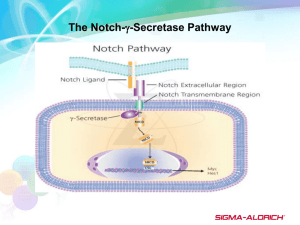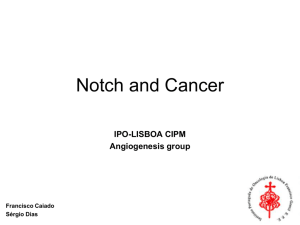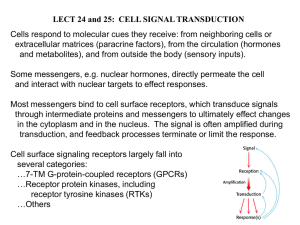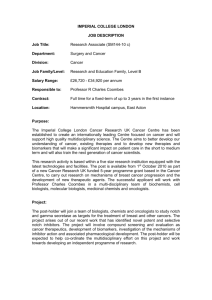Inhibition of CBF-1-Mediated Notch Signaling Induces FGF
advertisement
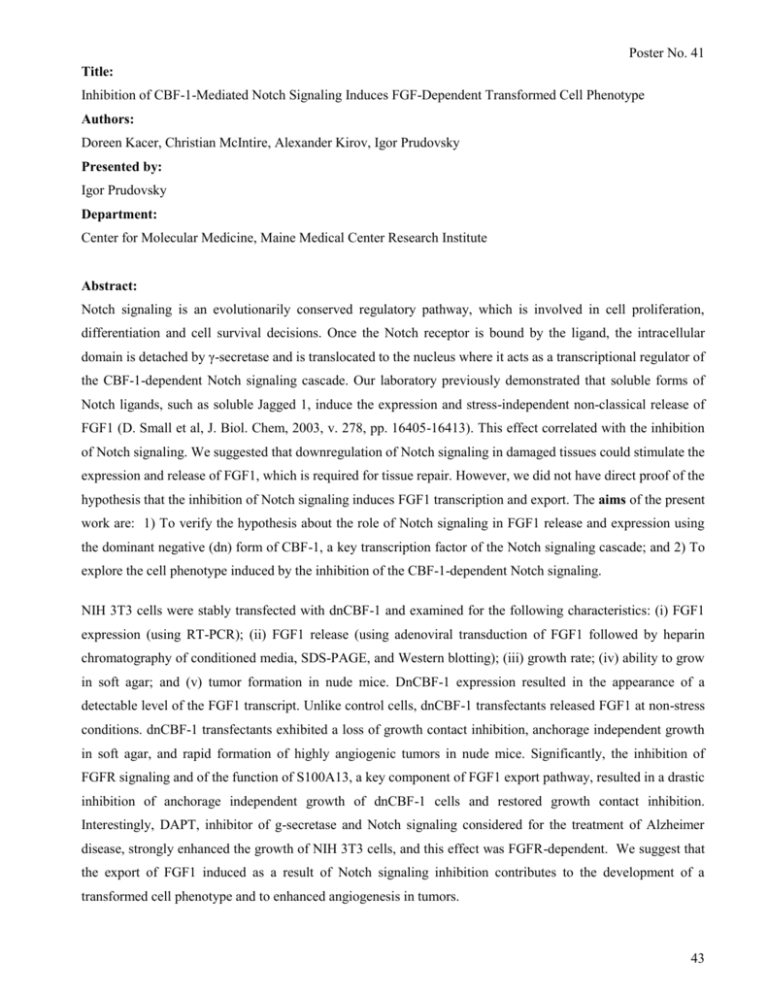
Poster No. 41 Title: Inhibition of CBF-1-Mediated Notch Signaling Induces FGF-Dependent Transformed Cell Phenotype Authors: Doreen Kacer, Christian McIntire, Alexander Kirov, Igor Prudovsky Presented by: Igor Prudovsky Department: Center for Molecular Medicine, Maine Medical Center Research Institute Abstract: Notch signaling is an evolutionarily conserved regulatory pathway, which is involved in cell proliferation, differentiation and cell survival decisions. Once the Notch receptor is bound by the ligand, the intracellular domain is detached by γ-secretase and is translocated to the nucleus where it acts as a transcriptional regulator of the CBF-1-dependent Notch signaling cascade. Our laboratory previously demonstrated that soluble forms of Notch ligands, such as soluble Jagged 1, induce the expression and stress-independent non-classical release of FGF1 (D. Small et al, J. Biol. Chem, 2003, v. 278, pp. 16405-16413). This effect correlated with the inhibition of Notch signaling. We suggested that downregulation of Notch signaling in damaged tissues could stimulate the expression and release of FGF1, which is required for tissue repair. However, we did not have direct proof of the hypothesis that the inhibition of Notch signaling induces FGF1 transcription and export. The aims of the present work are: 1) To verify the hypothesis about the role of Notch signaling in FGF1 release and expression using the dominant negative (dn) form of CBF-1, a key transcription factor of the Notch signaling cascade; and 2) To explore the cell phenotype induced by the inhibition of the CBF-1-dependent Notch signaling. NIH 3T3 cells were stably transfected with dnCBF-1 and examined for the following characteristics: (i) FGF1 expression (using RT-PCR); (ii) FGF1 release (using adenoviral transduction of FGF1 followed by heparin chromatography of conditioned media, SDS-PAGE, and Western blotting); (iii) growth rate; (iv) ability to grow in soft agar; and (v) tumor formation in nude mice. DnCBF-1 expression resulted in the appearance of a detectable level of the FGF1 transcript. Unlike control cells, dnCBF-1 transfectants released FGF1 at non-stress conditions. dnCBF-1 transfectants exhibited a loss of growth contact inhibition, anchorage independent growth in soft agar, and rapid formation of highly angiogenic tumors in nude mice. Significantly, the inhibition of FGFR signaling and of the function of S100A13, a key component of FGF1 export pathway, resulted in a drastic inhibition of anchorage independent growth of dnCBF-1 cells and restored growth contact inhibition. Interestingly, DAPT, inhibitor of g-secretase and Notch signaling considered for the treatment of Alzheimer disease, strongly enhanced the growth of NIH 3T3 cells, and this effect was FGFR-dependent. We suggest that the export of FGF1 induced as a result of Notch signaling inhibition contributes to the development of a transformed cell phenotype and to enhanced angiogenesis in tumors. 43
